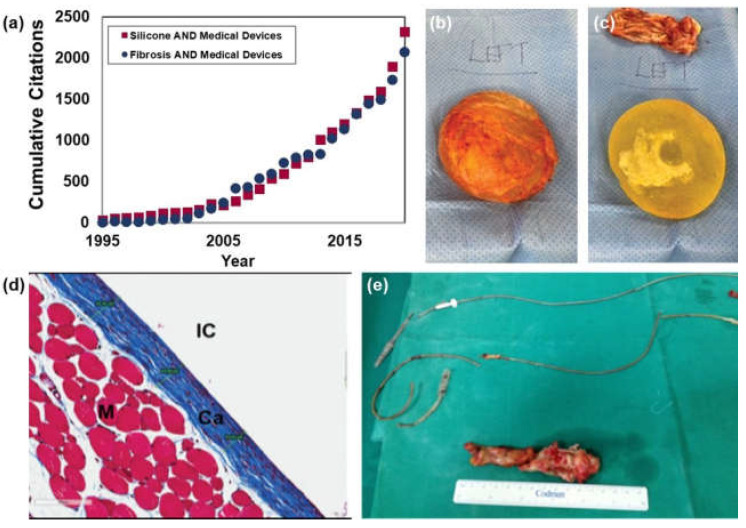Figure 6.
Fibrotic response to implantable devices. (a) A Web of Science citation analysis shows that as publications of Silicone Medical Devices were rising in number, so too were citations of work on Fibrosis and Medical Devices. This trend highlights a need to address the fibrosis in the medical device industry. (b,c) Silicone breast implants are commonly removed due to fibrotic layer development. (d) Masson’s trichrome staining on the surface of a silicone implant shows the collagenous layer (Ca, blue) that builds up around the implant (IC) surface. (e) Metallic implants such as cardiac pacemaker leads are also subject to the same fibrotic development that inhibits proper function of the device and necessitates removal. (Image (b,c) adapted from Lee et al. 2020 [130,131], image (d) adapted from Frenkiel et al. 2017 [132], image (e) adapted from Kokotsakis et al. 2014 [133] http://creativecommons.org/licenses/by/4.0/ (accessed on 1 December 2021)).

